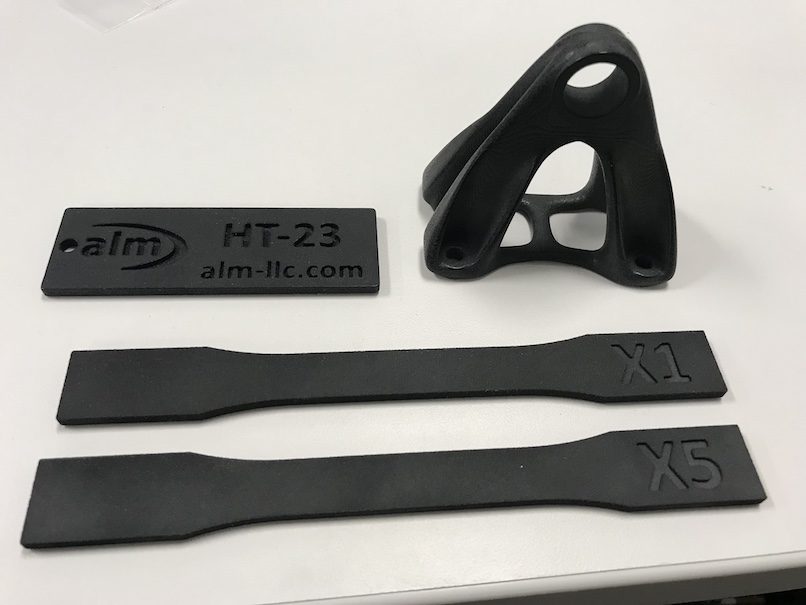Which High-Strength, Heat Resistant Thermoplastic is the best for your job.
HT-23 is based on a PEKK resin with 23% Carbon Fiber compounded in and ground to a fine powder. The carbon fibers are encapsulated in the resin, and due to this, you get a “random” orientation of fibers in the part bed.
This random orientation means you will not see differences in your mechanical properties in X vs. Y and you will see a reduced drop off of the Z properties, so physical properties are nearly isotropic. The PEKK is a high-performance polymer that is extremely chemically resistant, has a high melt point, and is inherently flame retardant.
Parts made from HT-23 material offer high strength at low weight and withstand high temperatures. It is the first high-temperature polymer laser sintering solution enabling serial-production of demanding composite components for aerospace, electronics and mobility industry.
HT-23 offers automotive manufactures a high level of chemical resistance, it is thermally stable and is a cost-effective alternative to aluminum and in some instances, it can replace steel while also being light enough to be used in place of aluminum.
It can also be used in sensors and ignition components, transmissions, thermostats and throttle bodies. There is research going into uses in Aerospace, Medical, Food Production, Drones and high temperature electronics.
ULTEM™ 1010 resin is a high-performance FDM® thermoplastic is a high-performance engineering thermoplastic polymer that provides superior strength and stiffness versus any other FDM printed parts. It has excellent chemical resistance and has a continuous service temperature of 340 degrees F.
|
Compare of ULTEM and HT-23 |
Ultem FDM Printed |
HT-23 SLS Printed |
|
|
Specification |
Value |
Value |
Units |
|
Specific Gravity, 73°F |
1.28 |
1.39 |
– |
|
Tensile Strength X,Y @ Yield, 73°F |
9,300 |
11,603 |
psi |
|
Tensile Strength Z axis @ Yield, 73°F |
5,990 |
8,847 |
|
|
Tensile Modulus of Elasticity, 73°F |
401,000 |
942,000 |
psi |
|
Flexural Strength X,Y, 73°F |
21,000 |
14,649 |
psi |
|
Flexural Strength Z axis, 73°F |
11,100 |
11,784 |
|
|
Flexural Modulus of Elasticity |
500,000 |
865,00 |
psi |
|
Melting Point (Crystalline) Peak |
627 |
575 |
°F |
At Jawstec we have the ability to print the HT-23 and besides seeing the strength differences the high-speed production capabilities of an SLS machine vs FDM printing. We are very excited to be one of the first companies to be offering such a high-end product produced on an SLS machine that can be produced in a production environment.

Hello,
I am a Senior Manufacturing Engineer with UDRI. We are having trouble printing with HT-23. I think that it is because the material is hygroscopic and has not been stored properly.
How do you store your material?
Hi Lee,
We actually have EOS do all of our HT-23 printing so I don’t know what parameters they store it in.
Thanks,
Philip
Please add CTE to property list